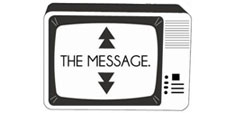You are here
Shifting Focus from Content to Medium
Primary tabs

Using various records of the Hindenburg disaster, this assignment encourages students to engage with medium over content, especially in terms of literary studies.
This assignment encourages students to think beyond their preconceptions of what "medium" is and view all things as mediated--especially text.
Instructors will need to assign an orienting theoretical piece on medium and assemble an applicable archive of media for students to analyze. I used the first chapter of McLuhan's Understanding Media ("The Medium is the Message").
Assign the students a piece of media theory that you think well supplements their primary text reading in a literature class or your chosen archive of materials in a rhetoric class. Some potential candidates include Raymond Williams, Marshall McLuhan, or Bolter and Grusin. You may also ask your students to watch a lecture such as this one in order to gain some grounding for talking about media. We spent a full class period discussing McLuhan's argument before engaging in this activity.
I then assembled an archive of media artifacts around our primary text, War of the Worlds. I asked the students to approach this archive mostly through affect, which I defined as "the way media objects make us feel."
I began by handing out a transcript of Herbert Morrison's famous radio broadcast account of the Hindenburg disaster. I asked the students to read this transcript to themselves and circle words or phrases that made them feel a certain way. Then, I asked them to account for their experience in terms of the medium in which they experienced it. Next, I played an audio file of Morrison's radio broadcast and asked them again to recount their reaction, again accounting for medium. Finally, I asked them to watch a YouTube video that superimposed a Universal news reel of the explosion over the audio of the broadcast. Students were generally most moved by either the radio broadcast or the YouTube video and discussed why.
I then explained that Orson Wells wanted to capture the "spirit" of the Hindenburg broadcast (1937) in his own adaptation of War of the Worlds (1938). I played a ten-minute portion of the radio broadcast and asked them to relate the two radio pieces to each other, again, paying attention to how the medium of radio attempted to make its audience feel a certain way.
By this point, the students generally agreed that radio, rather than "lacking" the visual, capitalized on conveying information chiefly through an aural medium. We talked a little bit about McLuhan's view of "hot" vs. "cold" media, and I then asked them to think about how text itself also function as a medium.
We then read a selection from Book II, Chapter 4 ("The Death of the Curate") in War of the Worlds as a class. I asked them to each read a paragraph of the text as dramatically as they felt comfortable doing. Again, I asked them how the text as a medium tries to inspire suspense in the audience.
Finally, we watched an analagous clip from Steven Spielberg's 2005 War of the Worlds, in which the Martian alien, like the passage from the book, is probing the basement while the protagonist hides in fear. I asked them how the visual medium attempts to create suspense in the same plot arch. After students practiced analyzing the two very different methods, I reiterated that that content of the two pieces was somewhat irrelevent to their analysis--the medium was what mattered.
Make detailed notes on the orienting piece of media theory you assign your students and spend time working through that piece with them. Our class spent an entire day on "The Medium is the Message" and read it in terms of our current text (War of the Worlds) before engaging in detailed analysis of other media.
Students need to read and discuss a secondary media text in addition to primary course materials for this lesson.
I teach a ninety-minute class period of Literature and Popular culture, which is a varient of Literature Across the Disciplines (E314J). The course seeks to explore the intersections of literature and popular culture from the point of view of mass readership and other forms of mass media. The course requires students to consider mediation through the lens of culture, history, and media theory as they engage in close reading and analysis.
-

- Log in to post comments

